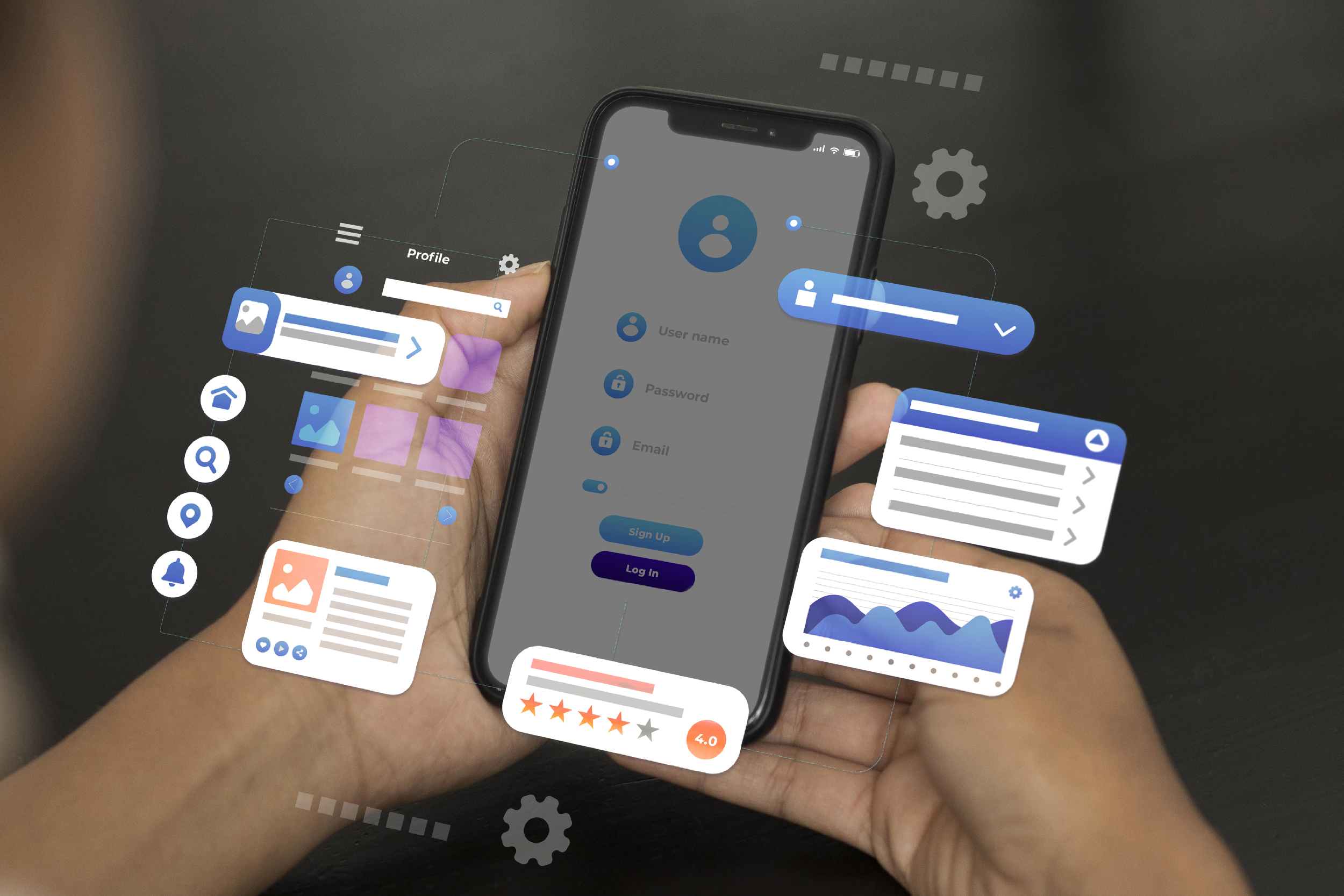
7 Reasons for Investing in E-Learning App Development Right Now
The development of eLearning apps has transformed the educational sector. A significant shift is taking place in the education and training sector. The days of traditional classroom environments are gone. The demand for flexible learning, the geographical limitations, and a flurry of schedules are fueling creative solutions. A lot of educational and business institutions are looking for creative solutions. This is why e-learning applications can be useful.
E-learning apps are mobile applications designed for the idea of education and training. They provide an efficient and easy way for individuals to gain new techniques. They can acquire knowledge quickly and at their own pace. All the steps involved in creating the apps are referred to as the development of an e-learning app. This includes the ideation of the design of interfaces, functional programming, and publication.
7 Reasons Why Companies Should Invest In eLearning App Development
The following seven arguments prove why a E-learning application is a smart investment for the future.
Enhanced Flexibility and Accessibility:
Apps for learners, eLearning offer unbeatable flexibility. Students can access their devices from any device, from anywhere, and at any time. They have access to the course materials, lectures as well as tests and other learning tools. For professionals who work this is a breakthrough. They can study during breaks or while they commute.
Teams spread across the globe may also benefit from this. They are able to access the same training materials regardless of area. Students can also study at their own pace and go through material at their own pace to ensure that they understand.
Improved Engagement and Retention:
The learning process can become more exciting and enjoyable through eLearning app development. In lieu of being an passive activity you can create an environment that is more engaging for learning. Multimedia elements like films, role-playing games and gamified educational experiences could be integrated. These elements, in contrast to textbooks with static content, help keep the students’ enthusiasm and focus.
Interactive components help students reinforce new material. This allows them to test their knowledge and receive immediate feedback. Gamification is the act that adds a fun element to the learning process. It encourages students to keep coming back.
Personalized Learning Experiences:
Apps for e-learning are able to accommodate different learning needs and learning styles. The app is able to alter levels of difficulty and content depending on the performance of the learner. For example in the event that a student finds an idea hard, it might provide more exercises or alternative explanations. However when a student is able to breeze through an entire subject however, the app could present more challenging content.
Everyone can gain from a better learning experience thanks to this individualized method. Students can learn at their own pace and focus on areas where they’ll require help.
Scalability and Cost-Effectiveness:
Apps for e-learning can be adaptable. After the app is created, a huge amount of users will be able to access the same material without substantial additional costs. This is why it’s a cost-effective alternative for companies and organizations. They can also train a significant number of students or employees.
In-person training sessions in person require instructors to be hired. There are challenges with renting space and scheduling sessions based on the availability of students or staff members. These administrative and financial problems are eliminated through eLearning applications.
Real-time Performance Tracking and Analytics:
App development for eLearning provides useful insight into the progress and performance of learners. Instructors and training managers can benefit greatly from these insights. Imagine being able to access data about the performance of a student on tests. You can also find out the areas where they are most likely to quit, and which sections of the course they’re having difficulty with. This information could be utilized to track learning objectives and pinpoint possible areas of difficulty for students.
Increased Knowledge Sharing and Collaboration:
E-learning apps can help encourage student collaboration and knowledge sharing. They can be incorporated into social learning elements such as group projects, group projects as well as discussion boards. In the end, students can establish connections, share ideas, and gain from each other’s experiences.
Take a look at a scenario in which the student is struggling with a certain idea. They may be able to interact with colleagues or classmates who may be able to assist. They can share their understanding by asking questions in an online discussion forum. This type of learning environment encourages an increased sense of belonging between students. It aids in the development of a better understanding of the topic.
Staying Ahead of the Curve in a Competitive Landscape:
The market for online learning is growing rapidly. Making investments in eLearning apps shows you are a forward-thinker and committed to advancing technology. This will give you an edge in attracting new employees, students, or even clients.
Students who want to take advantage of flexible learning options will benefit greatly from it. They are attracted to institutions of learning that offer interesting and accessible e-Learning options.
E-Learning App Development: A Multi-Step Process
It requires careful preparation and execution to build an effective online learning application. This is a brief explanation of the process:
Needs Assessment and Target Audience:
Selecting your audience of choice and learning goals will be the initial step. What knowledge or skills do you hope students learn? Who will you be developing the app? The learning style, needs and the technical capabilities of your users will determine the function and overall style for your application.
Content Creation and Design:
You can develop informative and interesting content once you know the audience you want to reach. This can include creating videos, interactive tests or even simulations. The way in which the information is presented must be simple, concise and visually attractive. Designing the UX (UI) as well as user interface (UX) is vital for making it easy to use as well as entertaining.
App Development and Programming:
This is where you can find technological magic. Developers use the appropriate frameworks and programming languages to convert your idea into a functioning application. This involves the creation of the app’s architecture including multimedia components, as well as user interaction.
Testing and Deployment:
Before releasing the app to the public at large It is crucial to test the app. To ensure that users have a smooth experience, users must be able to identify any glitches or bugs. Once testing is completed the app is made available via a private learning control software (LMS) or in the appropriate apps store (Google Play Store and Apple App Store).
Maintenance and Updates:
The world of learning is constantly changing. You must ensure that your eLearning application up-to-date with the latest developments and new technologies. This could mean the introduction of new features based on user feedback, updating the existing material, or fixing any issues.
What Technologies Should We Use in eLearning App Development?
The rapid expansion of eLearning technology has revolutionized education, and requires the use of cutting-edge technology to provide engaging and effective learning experiences. To create an app that is successful in eLearning various key technologies must be incorporated. These tools ensure that the app is user-friendly, customized and accessible. It is also secure.
Artificial Intelligence (AI)
Artificial Intelligence (AI) is an essential component of modern eLearning app development. AI algorithms can analyze the patterns of learning and preferences to offer individualized learning experiences. Artificial intelligence-powered functions include adaptable learning pathways and intelligent tutoring systems as well as real-time feedback systems. Through the ability to tailor content to each individual’s demands, AI enhances learner engagement and improves the educational outcome.
Machine Learning (ML)
Machine Learning (ML), an aspect of AI is vital in processing huge quantities of data and predicting. For eLearning, ML algorithms can evaluate student performance and forecast future outcomes, which can help educators recognize students who are at risk and provide prompt interventions. ML can also be used to automate administrative tasks, like the grading process and tracking attendance and allowing teachers to focus their efforts on teaching.
Virtual Reality (VR) and Augmented Reality (AR)
Virtual Reality (VR) and Augmented Reality (AR) are changing the way we learn by creating interactive and immersive learning environments. VR lets learners enjoy realistic simulations, which is especially useful in areas such as engineering, medicine and architecture. AR overlays digital information on the real world, improving learning by providing context-based information. This makes learning more enjoyable and memorable.
Gamification
Gamification integrates game design elements into eLearning in order to boost the motivation and involvement. The use of leaderboards, badges and quizzes help to make learning enjoyable and engaging. With the help of games, eLearning apps can improve retention of knowledge and increase participation. Gamified components help to meet the social and competitive nature of students, making learning a pleasurable experience.
Cloud Computing
Cloud computing provides the flexibility and capacity to scale for the development of eLearning apps. Cloud computing allows for to store and manage massive quantities of data, and also supports the creation of collaborative environments for learning. Cloud-based eLearning applications allow students to access educational material from any device connected to access to the internet. Cloud computing also ensures that updates and maintenance is effortlessly handled, reducing the amount of downtime and improving user experience.
Data Analytics
Data analytics are essential to tracking and improving performance of eLearning applications. Through collecting and analyzing information about user interactions as well as their progress and performance, developers as well as educators are able to gain valuable insight into the learning habits of students. This approach is based on data and will allow for continual improvement of learning. Predictive analytics are able to identify patterns and trends, allowing teachers to adapt their teaching strategies to suit the needs of their students.
Mobile Technology
The increasing use of tablets and smartphones calls for an approach that is mobile-first to eLearning development of apps. Mobile technology allows learners are able to access their content anytime and anywhere. Mobile-friendly interfaces and responsive design are essential for ensuring an unmatched learning experience on various devices. Mobile technology can also support offline learning, which allows users to download content and keep learning without internet access.
Blockchain
Blockchain technology is a safe and transparent method to manage credentials for education and certificates. With the help of blockchain technology, eLearning platforms can offer verifiable and secure certificates that are tamper-proof, increasing the credibility and trustworthiness. Blockchain is also a way to ensure that personal information and protects the privacy of learners and protects against fraud.
Conclusion
It is possible to completely transform your education and training programs through a strategic investment in eLearning app development. So, working with a top app development firm such as AllZone Technologies is crucial for any business. Flexible learning, personalized learning, and a sense of engagement are the things eLearning applications provide to satisfy the requirements of learners today. Mobile App development trends for learning are on the rise in the present. Educational institutions have a greater chance to revolutionize the educational system.
E-learning apps can be an effective tool to assist students and reaching their goals in education. It doesn’t matter if you’re an educational institution, a company, or an entrepreneur seeking to share your expertise and experience, you will greatly benefit from eLearning app development.





